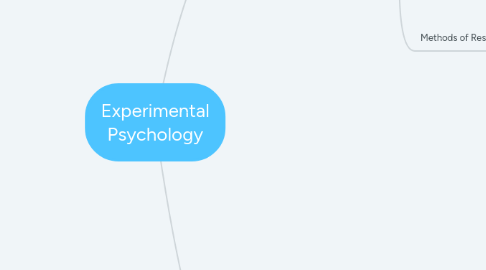
1. Research
1.1. Vocabulary
1.1.1. Correlation/Explanation
1.1.1.1. A reason or observation that connects two pieces of data.
1.1.2. Sample
1.1.2.1. A small number of participants that have been selected from the total applicants.
1.1.3. Variable
1.1.3.1. Any factor that is capable of change.
1.1.4. Hypothesis
1.1.4.1. An educated guess on the relationship between two variables.
1.1.5. Experimental Group
1.1.5.1. The group that receives the actual testing.
1.1.6. Control Group
1.1.6.1. The group that doesn't receive the testing, or they receive a placebo. This is so that they can compare what "normal" is to the experimental group.
1.1.7. Placebo
1.1.7.1. Appears to be the medication, but isn't.
1.1.8. Self-fulfilling Prophecy
1.1.8.1. When the experimenter accidentally influences the experiment to receive the desired outcome.
1.2. Methods of Research
1.2.1. Naturalistic observation
1.2.1.1. To observe your subject without them knowing you are studying them. You are leaving them in their natural state.
1.2.2. Case studies
1.2.2.1. A Case Study is an intensive study of a single group or person that has nearly constant evaluating of the subject.
1.2.3. Surveys
1.2.3.1. The interviewing or questioning of a specific sample of subjects.
1.2.4. Longitudinal Studies
1.2.4.1. Long term study of the subject(s). Generally takes place over a couple of years.
1.2.5. Cross-sectional Studies
1.2.5.1. Cross-sectional studies take a large sample of people and then group them depending on their age. Next they take a sample from each age group and test those samples.
2. Statistical Evaluation
2.1. Vocabulary
2.1.1. Statistics
2.1.1.1. The mathematical aspect of taking/making inferences from data
2.1.2. Descriptive Statistics
2.1.2.1. Organizing the collected data an a clear and easy reading format would be a way of using descriptive statistics.
2.1.3. Frequency Distribution
2.1.3.1. Frequency Distribution is the arrangement of data in such a way that one can see how often a point (re)occurs.
2.1.4. Normal Curve/Bell-shaped Curve
2.1.4.1. A frequency distribution graph shaped like a bell (Small and rounded at the top, flared and large at the bottom).
2.1.5. Central Tendency
2.1.5.1. When something has a Central Tendency score (a number), their score is what's considered to be average at that moment in time.
2.1.6. Mean
2.1.6.1. The Mean is what you get when you take the sum of all the data and divide it by the number of pieces of data, which will give you the exact middle of all the data combined. For example, if three kids had three apples and one kid had four, the Mean would be (3+3+3+4)/4=3.25
2.1.7. Mode
2.1.7.1. The Mode is the piece of data that reoccurred the most. For Example if 3 kids had 3 apples and one kid had four, the Mode is 3 apples.
2.1.8. Variance
2.1.8.1. Measures of Variance provides an index of how spread out each point is from the other.
2.1.8.1.1. One type of Variance is range
2.1.8.1.2. Another type of Variance is standard deviation.
2.1.9. Correlation Coefficients
2.1.9.1. The Correlation Coefficient describes the direction and the strength between two sets of observations.
2.1.10. Inferential Statistics
2.1.10.1. Inferential Statistics determine whether a statistical outcome happened because of chance or whether they support a hypothesis.
